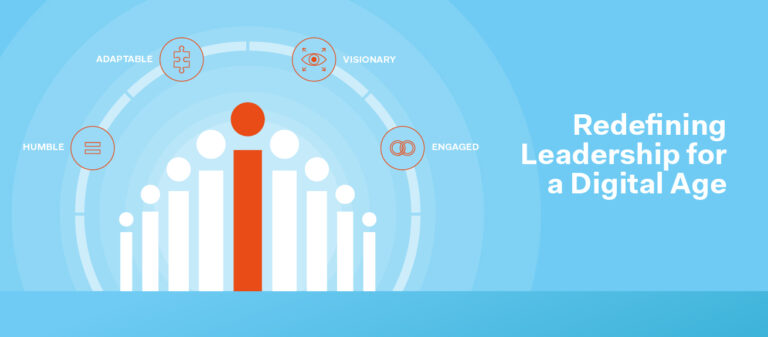In a rapidly evolving technological landscape, businesses are challenged to maintain robust IT infrastructure capable of supporting innovation, security, and agility. Future-proofing IT infrastructure has become a critical endeavor to ensure organizations can meet the demands of today’s digital world and withstand the unpredictability of tomorrow.
Prashant Bhardwaj Chief Information Officer (CIO), has demonstrated remarkable foresight and leadership in future-proofing IT infrastructure. With an impressive background in IT strategy and digital transformation, Bhardwaj’s insights reveal key strategies for creating resilient, scalable, and secure IT environments. This article explores the principles and practices Bhardwaj champions, offering guidance to the Chief Information Officer (CIO), IT leaders, and organizations aiming to position themselves at the forefront of technological progress.
The Importance of Future-Proofing IT Infrastructure
Future-proofing IT infrastructure is no longer an option; it’s a necessity for any organization looking to thrive in a dynamic digital landscape. Traditional IT infrastructure, often siloed and rigid, struggles to adapt to new technologies and security threats. In contrast, a future-proof IT infrastructure is flexible, scalable, and designed to integrate emerging innovations seamlessly.
According to Prashant Bhardwaj, future-proofing encompasses more than just preparing for technological changes. It also involves building a resilient structure that allows for rapid response to market shifts, cyber threats, and evolving customer needs. By investing in robust IT infrastructure, organizations can reduce downtime, prevent data breaches, and deliver consistent value to customers.
Key Elements of Future-Proof IT Infrastructure
Bhardwaj outlines several key elements that organizations should focus on when future-proofing their IT infrastructure:
- Scalability and Flexibility
In Bhardwaj’s experience, scalability is a foundational pillar of future-ready infrastructure. IT infrastructure must scale both horizontally and vertically to support business growth. Cloud technologies, which provide virtually unlimited scalability, play a significant role in achieving this goal. Bhardwaj emphasizes the value of flexible cloud solutions, which allow organizations to add or remove resources as needed, ensuring that IT systems align with real-time demands.
- Enhanced Security and Data Privacy
With cyber threats escalating, security and data privacy have become non-negotiable aspects of any IT strategy. Bhardwaj advocates for a multi-layered security approach, leveraging firewalls, intrusion detection systems, and regular security audits. Additionally, implementing zero-trust architecture—an approach where no entity is trusted by default—further protects sensitive information by continuously verifying identities.

- Automation and Artificial Intelligence
Automation is vital for efficient, scalable IT systems, Bhardwaj suggests. Automating routine IT tasks like data backups, software updates, and threat detection minimizes human error and reduces operational costs. Moreover, AI and machine learning algorithms can analyze vast amounts of data, predict potential IT failures, and recommend optimal solutions. By embedding AI into IT infrastructure, organizations can unlock significant efficiencies and anticipate issues before they escalate.
- Emphasis on Edge Computing
Bhardwaj identifies edge computing as a critical development in the move towards decentralized IT infrastructure. By processing data closer to its source—whether through IoT devices or regional data centers—edge computing reduces latency and improves data efficiency. In industries like healthcare, manufacturing, and telecommunications, where real-time data processing is vital, edge computing has become essential.
- Disaster Recovery and Business Continuity
Resilience isn’t just about security; it’s also about continuity. Bhardwaj stresses the need for robust disaster recovery plans and backup systems to ensure that business operations can continue, even in the face of catastrophic events. Implementing redundancy in data centers, regularly testing disaster recovery protocols, and maintaining offsite backups are crucial strategies for resilient IT infrastructure.
Strategic Insights from Prashant Bhardwaj
Based on his extensive experience, Bhardwaj offers several strategic insights for Chief Information Officer (CIO) looking to build resilient IT infrastructures.
- Build an Innovation-Centric IT Culture
A future-proof IT strategy starts with the right culture. Bhardwaj advocates for an innovation-centric culture where IT teams are encouraged to experiment with new technologies and continuously upskill. Investing in employee training, fostering cross-departmental collaboration, and allowing room for creative problem-solving can drive innovation across the organization.
- Adopt a Hybrid Cloud Approach
Bhardwaj believes that hybrid cloud solutions provide the best of both worlds—offering the flexibility of public cloud services and the control of private clouds. Hybrid models allow organizations to store sensitive data in private environments while leveraging the scalability of public cloud infrastructure for less sensitive workloads. This approach also reduces dependency on a single cloud provider, ensuring operational continuity.
- Proactive Investment in Cybersecurity
Bhardwaj asserts that cybersecurity should be viewed as a proactive investment rather than a reactive measure. Implementing robust security frameworks, such as multi-factor authentication, end-to-end encryption, and identity management, builds resilience against cyber threats. Regular security audits and employee training also ensure that organizations remain vigilant against evolving security challenges.
- Foster Partnerships and Collaboration
In Bhardwaj’s view, partnerships with other technology leaders, vendors, and industry specialists provide access to expertise and innovative solutions that might otherwise be out of reach. Collaborating with cloud providers, cybersecurity experts, and IoT developers can enhance an organization’s ability to adapt and grow. These partnerships are especially valuable when navigating complex integrations or piloting new technologies.
- Continuous Assessment and Adaptation
The pace of technological change demands continuous assessment and adaptation. Bhardwaj recommends that Chief Information Officer (CIO) conduct regular evaluations of their IT systems, reviewing performance metrics, assessing potential vulnerabilities, and identifying areas for improvement. By remaining agile and responsive, organizations can quickly pivot their strategies and upgrade their systems as needed.
Overcoming Common Challenges in Future-Proofing IT Infrastructure
Bhardwaj acknowledges that future-proofing IT infrastructure comes with challenges. Limited budgets, skill gaps, and resistance to change are common barriers that organizations face. He advises Chief Information Officer (CIO) to address these challenges head-on:
- Allocating Budgets Wisely: Align IT investments with strategic business goals to maximize return on investment. Prioritize upgrades that have the most significant impact on security, scalability, and user experience.
- Bridging the Skills Gap: With technology advancing rapidly, a skills gap can hinder IT modernization efforts. Bhardwaj suggests investing in regular training and collaborating with educational institutions to recruit fresh talent equipped with the latest skills.
- Managing Change and Resistance: Change management is essential for a smooth transition to future-ready IT infrastructure. Clear communication about the benefits of modernization, along with phased rollouts, can help reduce resistance among employees.
Conclusion
Prashant Bhardwaj insights into future-proofing IT infrastructure provide a roadmap for Chief Information Officer (CIO) and IT leaders striving to create agile, resilient, and scalable systems. By focusing on scalability, security, automation, edge computing, and disaster recovery, organizations can build IT infrastructures that are prepared to meet the demands of the future. Bhardwaj’s approach underscores the importance of a proactive, innovation-centric IT culture that adapts to technological advancements and changing business needs.
In today’s fast-paced digital environment, future-proofing IT infrastructure is essential for business success. Following Prashant Bhardwaj Chief Information Officer (CIO) recommendations, organizations can not only navigate the complexities of technological change but also thrive in an era of constant innovation. As technology continues to evolve, leaders who embrace resilience, flexibility, and a forward-thinking approach will ensure their organizations remain competitive and prepared for what lies ahead.








